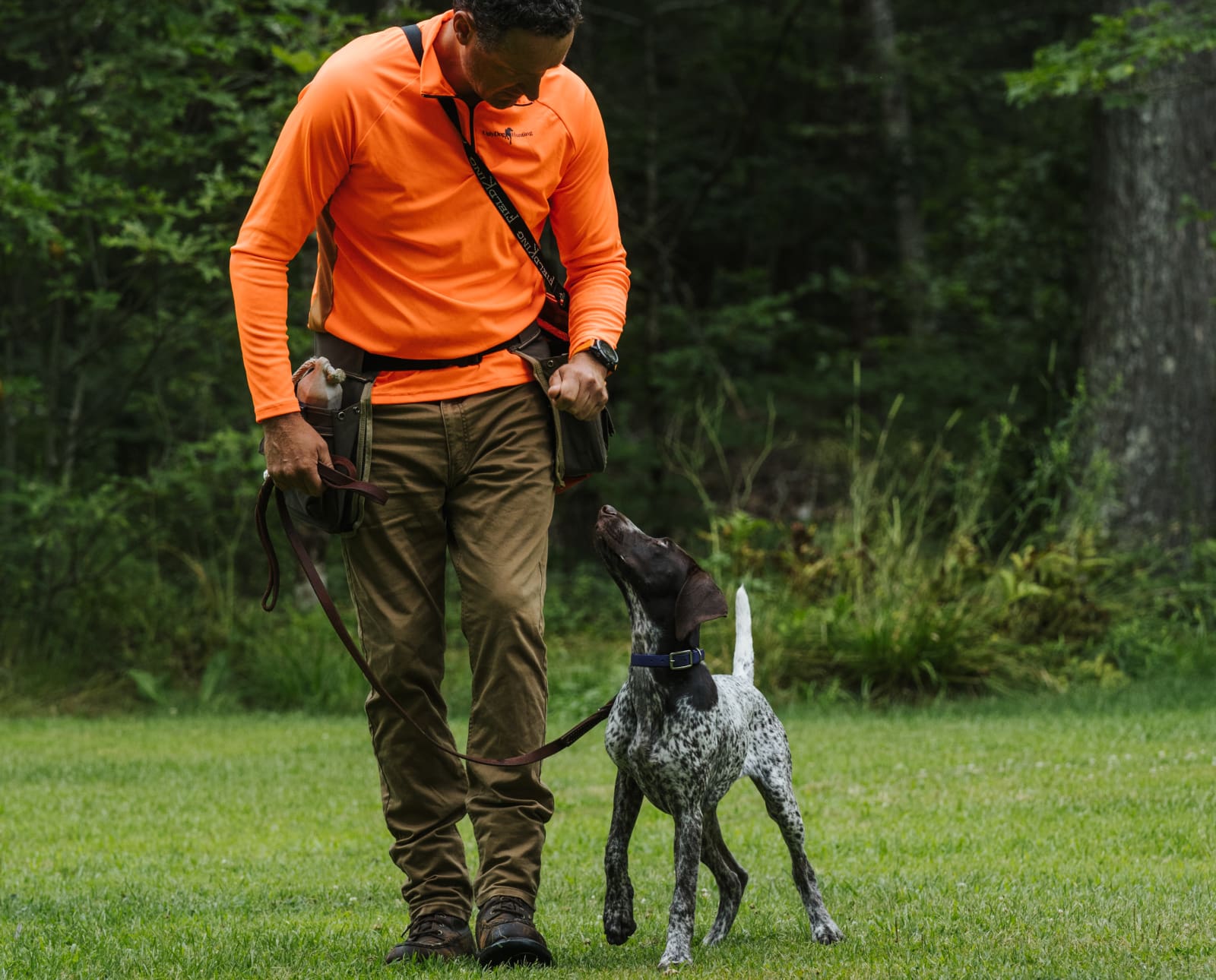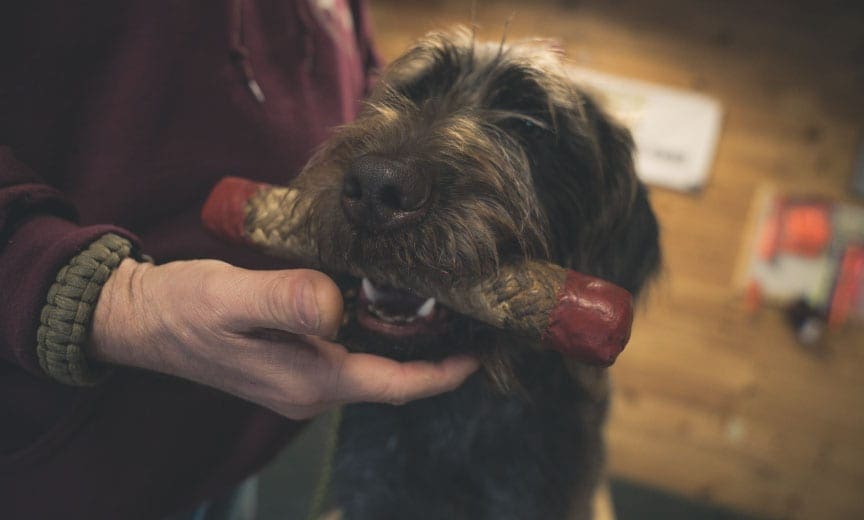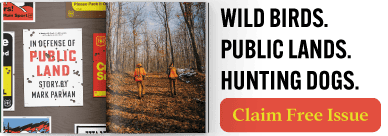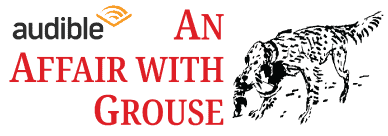Home » Hunting Dogs » How to Reset Your Dog in Training
How to Reset Your Dog in Training

Jason Carter is a NAVHDA judge, NADKC member, director of…
Maintaining a dog’s focus and keeping them grounded are important for successful training sessions and progress.
“That’s it. I’m sending my dog away to be trained!” So training didn’t go your way today and you are left with an alarmed dog and a bitter taste in your mouth. Hopefully, you called it a day before impacting the trusting relationship you worked so hard to earn. Time for both of you to recover and reset. Take a break, back up and go back to the basics where you both can find success.
Listen to more articles on Apple | Google | Spotify | Audible
These are the moments we call “pressure off.” It’s those times where we need to reset the brain for both the trainer and the dog. (Read The Five Mental States of Bird Dogs in Training) It’s where all of that time pairing, or bonding, with your dog as a pup pays off! Find some success and have a love fest moment with your dog, telling them everything is alright, repairing and preparing the brain for the next lesson.
Here are a few examples of how to help your dog regulate their emotions and reset their nervous system.
- Touch – In our training we can’t lose sight of the power of touch. If it’s a light soothing tap on the side or a full on ground rolling love fest, touch is a very natural, clear and a healing communication pathway that expedites recovery back to a calm state.
- Movement – Predictable movements and routines are visual silent commands to the dog that they pick up very quickly. If it’s your body positioning on your recall or movement patterns to release, all dogs study, learn and anticipate your movement habits every minute of the day. Use this to your advantage in your training.
- Tone – Connecting positive tone to pleasure is essential in the pairing process. If it be through connecting a “Good girl!” to bait or an “Atta boy!” followed by a tummy rub and play session, positive tones repair and help bring your dog back to balance quickly and easily.
- Time – Don’t expect your dog to process information like another. Dogs are individuals and may need more time and repetition to learn a skill. Often today’s lesson is tomorrow’s learning. Take a break, put your dog away until calmer states are restored. Often the lesson had already been conceptualized by the dog.
The ‘pairing process’ is essential for a number of reasons we often think of as intangibles but really are well established in this very process. Simply, this is the bonding you do with your dog; it’s the process in which he/she learns to trust you. Pairing uses Classical Conditioning to establish a relationship between the dog and handler, the same as the bell and food in Pavlov’s Theory. When we choose to play, pet, walk, and hang out with our dogs outside of training sessions, we are pairing with them, we are creating and strengthening a relationship. Dogs are far better at this than we are. They learn the most subtle nuances in our behavior: the way we walk, talk, stand and breathe are observed by them and are used in the pairing process.
The falsetto or high-pitch voice and friendly body gestures we use when no one is watching does wonders for improving responsiveness, even in our adult dogs. When we play, hug, and touch our dogs we are communicating with them. We’re telling them that they are safe and have nothing to worry about. When a dog is stressed, a friendly, high-pitch voice can soothe them and activate its upper nervous system or sympathetic system that allows self regulation.
Our visual cues are also very important. Though we all want our dogs to listen they rely far more on visual cues than verbal. Adding patterns of repetitive movements into your lessons reinforces desired behaviors and stimulates the portion of the brain that encourages learning. We need to be cognizant that dogs are perpetually studying our body language, even the most subtle. They notice the slightest forward shift of your weight on the send, the way you adjust your hat when you’re upset or the way you shift to one side a moment before asking them to release the bird. Your every twitch is under scrutiny so use it to your advantage.
As such, if you are stressed or angry they’ll know it, too! For those that test their dogs, you might remember the dog that showed up on your first test day that you never saw before in your training? Likely they caught the vibe that you were putting out and moved into an alarmed state where the dog spends more time reacting to your emotions and less time responding to your cues. The mind drifts from the task at hand and focuses more on its surroundings and potential dangers.
When a handler is emotionally charged the dog’s state of mind shifts out of the calm or alert part of their brain and enters the fight, flight or freeze mindset. Depending on many variables, at this point the dog’s mindset moves to alarm, fear or even terror. These variables become a direct link to their unpleasant experiences in their past. The dog will be unable to process any information. If training were to continue in this state, you would risk rewiring or reconditioning the dog. They would learn to misread your cues creating a confused, frightened and mistrusting dog and a further-frustrated handler. A dog that mistrusts will spend more time processing towards fight or flight than learning from you. It’s better to put the lead down and be done for a few hours, or even the day, than to teach your dog to be fearful of you.
An exponentially more damaging scenario is early puppy traumatic experiences. Puppies that are exposed to excessive pressure or trauma may exhibit toxic stress or more intense social behavior such as excitability, nervousness or chronic stress. Their ability to respond to calming gestures as adults is severely impaired by these experiences. Dogs that have experienced unfair training will require substantially more of your time repairing the damage.
Fear makes your dog dumb . . . enough said.
We all need to recognize and appreciate that when we use punishment to maintain the absence of a behavior, the behavior is absent only as long as the punishment is present. A perfect example is the bark collar. It extinguishes barking when in use though does not change the behavior when not in use. Punishment doesn’t teach, it just shows your dog what not to do. We need to remember that infusing lots of reinforcement in our training is just good teaching practice and perpetuates pairing and in turn helps to motivate your dog to want to perform for you.

As a trainer, there is nothing more enjoyable to see than a dog and its handler seamlessly working together in such a way that leaves us with no doubt they share a strong bond for one another and exhibit an undeniable affinity for the hunt. The dog who has been largely imprinted through positive reinforcement will consistently be an honest and reliable hunting companion.
Disregarding your dog’s mental state is a common mistake many trainers make. A great dog trainer can train towards the character of the dog and away from issues. They know what the dog can handle and are vigilant of their dog’s mental state. They are able to recognize when they can pressure their dog and how to reset them to get them back to that calm, trainable state. They know how to heal emotions and how to motivate and reinforce in a way that is meaningful to the dog.
Use these foundational strategies in your training and be intuitive to your dog’s needs and you will be rewarded with an honest and loyal hunting buddy for many years to come.
Jason Carter is a NAVHDA judge, NADKC member, director of youth development, secretary of NAVHDA’s youth committee, clinic leader and trainer at Merrymeeting Kennels. He has been around versatile hunting dogs his entire life, literally! Born into the Carter family and Merrymeeting Kennels, he attended his first NAVHDA test in Bowdoinham, Maine, when he was just a year of age. Jason successfully trains, tests and breeds Deutsch Kurzhaars in both the NAVHDA and NADKC testing systems. Through his work at the kennel, Jason has had the opportunity to develop pointers, flushers and retrievers over the years. When October arrives he can be found with family and friends hunting throughout New England.




Great Post. I even sent it to a buddy who’s just started training his first bird dog. I remember training my chessie how I had to train my self more then my dog. There were multiple times I had to end a training session because I could tell my dog was losing interest or I wasn’t quite communicating right.
Excellent advice for a novice like me. Where can I find out more about this style of training?
Great article, Jason!
Where is the advice on stopping flagging?
https://projectupland.com/hunting-dogs/bird-dog-training/understanding-and-fixing-flagging-in-a-bird-dog-2/